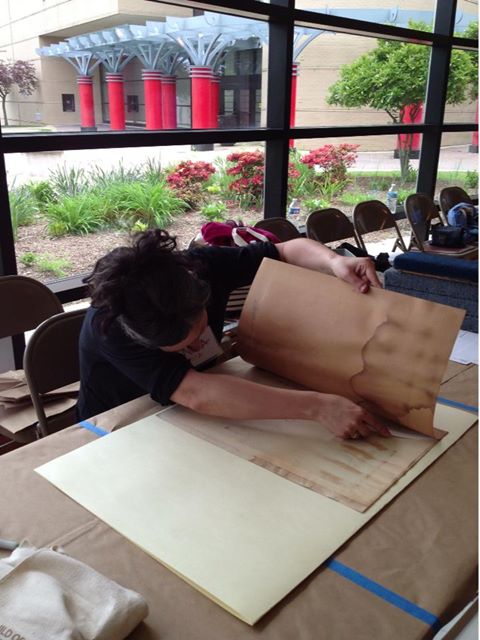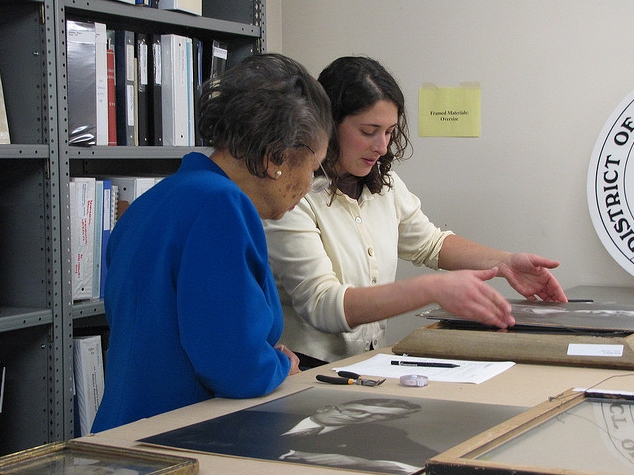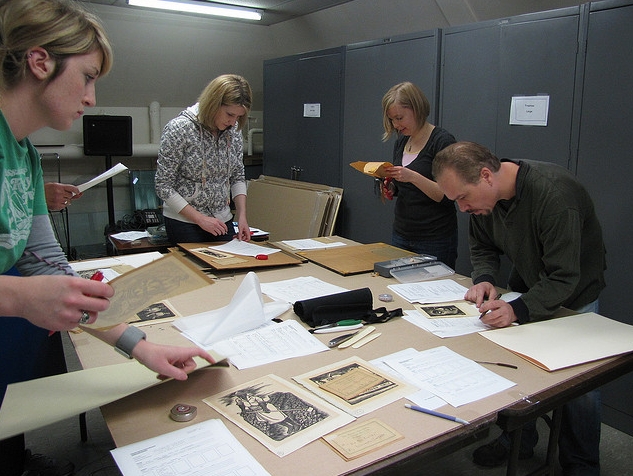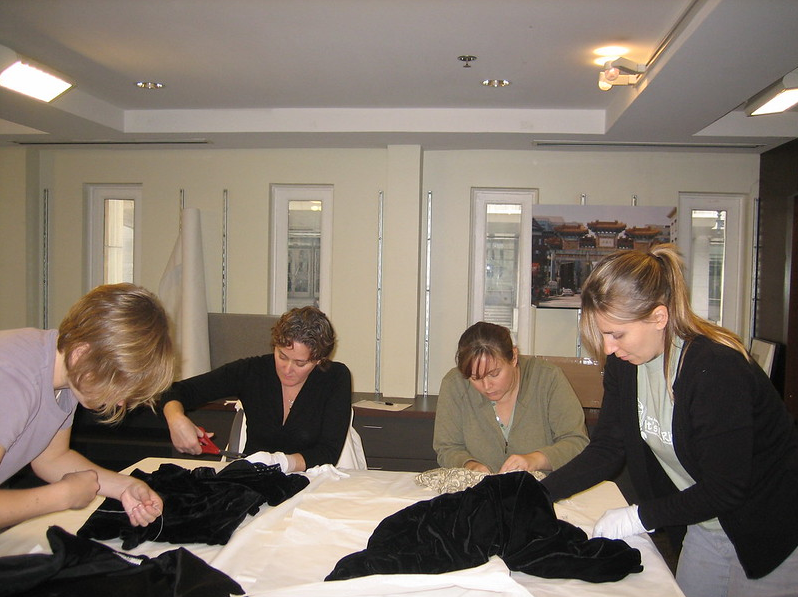New to Conservation? First, learn more about the field, or skip to how to find a conservator or find some helpful links and resources.


What is Conservation?
Art conservation is the preservation and maintenance of culturally significant objects. These include:
- fine arts, such as easel or wall paintings, sculpture, prints, drawings, and photographs
- decorative arts, such as furniture, textiles, ceramics, and glass
- paper documents and books
- archaeological materials
- anthropological artifacts
- monuments and historic buildings.
- time-based media (video, audio, digital media, etc.)
Because there are so many different types of cultural objects, conservators must specialize. For example, one conservator may choose to deal exclusively with oil paintings, another with wooden artifacts, another with illuminated manuscripts, and so on.
Conservators are professionals, educated specifically to deal with the type(s) of cultural objects in which they specialize. Many have earned advanced degrees. Their educational backgrounds commonly include coursework in the visual arts, including art history and studio art, as well as the sciences, especially chemistry. Training in preservation methodology is gained through some combination of graduate courses, internships, and apprenticeships.
There is never any lack of cultural materials needing a conservator’s attention. Many conditions, natural and man-made, cause things to age and deteriorate. Extremes of humidity and temperature, light, insects, pollutants, accidental damage, and neglect hasten the breakdown of wood, stone, metal, paper, adhesive, leather, fiber, glass, and other materials which make up historic and artistic objects.
The conservator’s job is to combat these destructive forces and to stabilize deteriorating materials, so that culturally significant objects will be available for future generations.
Since every cultural object is in some way unique, the conservator’s first responsibility is usually to examine and evaluate it thoroughly. Often this process involves not only scientific and technical analysis, but also historical and aesthetic judgements. Sometimes curators or other specialists are consulted. Old records and photographs, if available, are studied. Once the evaluation has been done, the conservator will normally prepare a condition report and a set of recommendations.
Recommendations may include:
- cleaning to remove grime and aged surface coatings (e.g., yellowed varnish)
- stabilizing deteriorating materials
- adding new materials to help support weakened original ones
- restoring the appearance to some degree
- displaying or storing the object in a particular way, in order to optimize its physical environment.
The conservator who prepares a set of recommendations is often available to actually treat the object, should the owner so desire. Any work external to the object itself—such as display, storage, and environmental systems—may require other specialists.
At the conclusion of a conservation treatment, the conservator provides the owner with detailed written and photographic documentation. This documentation is an important part of the cultural object’s history and should be retained for future reference.

How to find a Conservator
Unlike practitioners in long-established professions such as medicine and law, art conservators do not yet have to be certified in order to “hang out their shingle.” Anyone can claim to be a conservator. No governmental or private agency administers examinations or checks credentials. Therefore, the burden is on you, the consumer of conservation services, to choose your conservator(s) with care.
Begin your search by obtaining a list of conservators in the appropriate specialty. The best sources are:
- The American Institute for Conservation (AIC) has a free search tool for locating conservation professionals in your area. All members listed have had their training, knowledge, and experience reviewed by a body of peers recognized in the field. Search by specialty or name. They also have a guide on how to hire a conservator. To search, visit http://www.culturalheritage.org/experts.
- Museums, especially larger ones with staff conservators.
No matter where you obtain the names of prospective conservator(s), do your best to assess their competency in the conservation specialties you need. Do this just as you would with any other type of service provider. Talk to the individuals, in person if you can. Inquire about their educational background and preservation training. Find out how long they have been in business and whether full- or part-time. Ask for references. See if their facility seems organized and well outfitted. And show them the object needing conservation: Do they seem knowledgeable about that type of object? Have they treated similar items in the past? Are they forthcoming and specific about treatment rationales and procedures? Do they seem attentive to your wishes concerning treatment? And will they be able to do the treatment within a satisfactory amount of time?

Some helpful resources
Conservation Resources for Art and Antiques (2nd edition, 2004) compiled by the Washington Conservation Guild [PDF, XXkB]
Free online guides for a variety of artifact types
- Caring for Your Treasures (American Institute for Conservation)
- Care of Objects and Collections (Canadian Conservation Institute)
- Care and Display of Textiles (The Textile Museum)
- Collections Care (Library of Congress)
- Conserve O Grams (National Park Service)
- Family Treasures Series (University of Delaware)
- Mold, Mold Resources, and Flood clean-up (Environmental Protection Agency)
- Preservation Supply Specifications (Library of Congress)
- Storage and Consumer Guides (Image Permanence Institute)
Other professional organizations
- American Institute for Conservation
- Canadian Conservation Institute
- National Trust for Historic Preservation
- American Alliance of Museums (formerly the American Association of Museums)
- Society for Historical Archaeology
- International Institute for Conservation (IIC)
- International Council of Museums – Committee for Conservation (ICOM–CC)
- International Council on Monuments and Sites (ICOMOS)
Other regional conservation groups